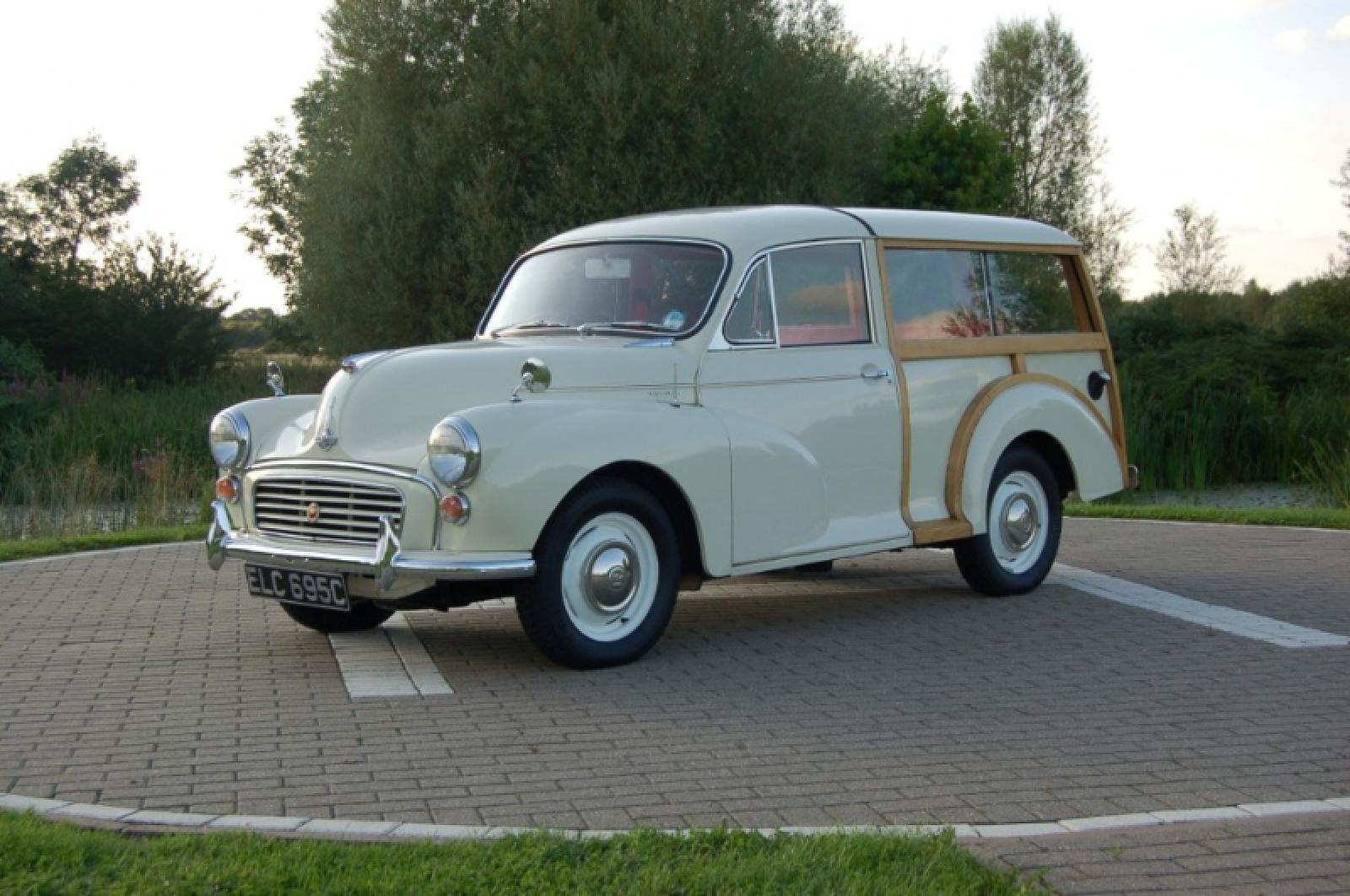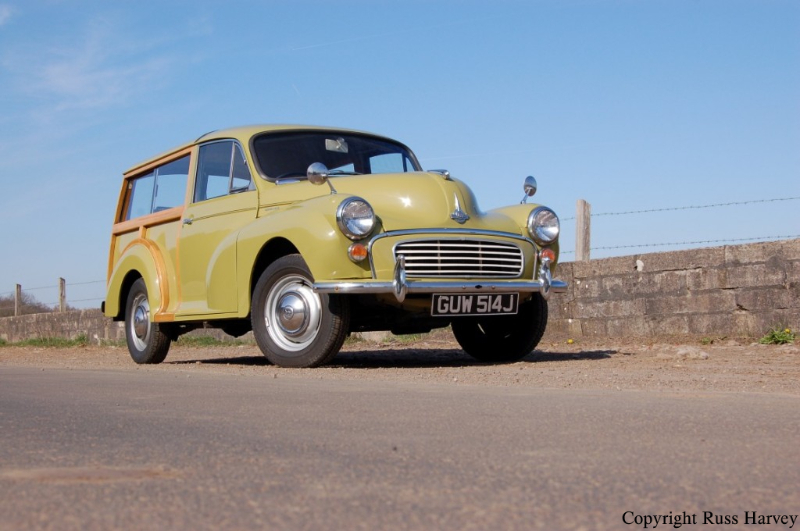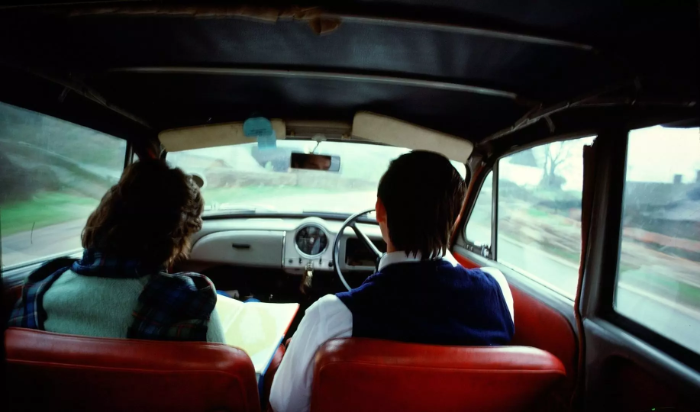Discover the charm and practicality of the iconic British automobile, the Morris Minor Traveller. With its distinctive 'woody' design, integrated rear body section crafted from high-quality ash wood, and a rich history dating back to 1948, this classic car offers a unique driving experience that combines comfort with vintage aesthetics.
What Is The Morris Minor Traveller?
The Morris Minor Traveller is an iconic British automobile that hails from the golden days of the motoring industry, merging both charm and practicality into a single package. Known as a 'woody', this vintage vehicle is not just meant for casual outings - it is a nod to a previous age, where aesthetics and quality craftsmanship were highly valued.
Designed as a practical estate car, the Morris Minor Traveller brings a unique design element to the table, making it immediately recognisable. One notable feature is the integrated rear body section, mostly crafted from high-quality ash wood, setting it apart from its competitors.
The traditional tailgate is replaced by dual, barn-style doors at the rear, giving it an eye-catching and distinctive style. Despite its compact size, the classic car doesn't sacrifice interior space; it offers a surprisingly roomy and cosy environment. Driving or merely travelling in this classic British car is undoubtedly a comfy experience because of its ample space.
The History Behind The Morris Minor Traveller
Steeped in history, the Morris Minor Traveller MkII has an origin story dating back to 1948. Its creation stems from the innovative mind of Sir Alec Issigonis, the very same genius who meticulously crafted the well-known Mini. It took several years of dedicated work, during which prototypes were quietly created, fine-tuned, and put to the test before the Morris Minor first appeared on the scene. Issigonis had a clear vision - to build a car that not only captured the quintessential British charm, but was also reasonably priced, straightforward to maintain, and presented an enjoyable driving experience.
Morris Minor Traveller Mk I
Despite the production of the Morris Minor being considered a daring move due to its distinct design elements, this did not deter the team.
The initial version of this car, the Morris Minor Traveller Mk I, showcased a half-timbered design - a style that was unique for its time.
Morris Minor Traveller Mk II
However, it was the Maurice Minor Traveller Mk II series that truly stole the show, earning instant approval and affection from the public with its refined and captivating design.
With its glossy wooden panels and timeless charm, the Morris Minor Traveller Mk II continues to hold a special place in the hearts of car enthusiasts, a testament to its rich and vibrant history.
The Traveller
The Traveller brought its own unique appeal when it was launched in 1952; its distinguishing feature was an exterior structural frame made of varnished, gleaming ash for the rear bodywork. This was complemented by two side-hinged rear doors, making it a real head-turner. The assembly process was quite unique as Travellers were built concurrently with the saloon model at the Cowley factory but without their rear bodies.
What Is The Morris Minor Traveller Like To Drive?
Driving a Morris Minor Traveller is not just about getting from one point to another - the purr of the old engine, combined with the distinct smell of the vintage leather interior, creates an immaculately classic ambience. The sensation extends beyond the idyllic aesthetics, as the driving experience itself is genuinely relaxing.
Despite its renowned age, the drive is incredibly plush, thanks to the car's well-maintained suspension system.
The result is a gentle, relaxing drive for both the car and its driver. Gear changes are a great part of this experience, as they are sharp yet smooth; this responsive handling reveals the agility beneath this compact classic's framework.

While it might not look like it, the Morris Minor Traveller uses one of the finest chassis designs of the late 1940s. Fitted with direct steering, the car responds immediately to every manoeuvre you make; its slim tyres lend it an easy-to-handle quality that keeps you in control.
Although it isn't made for a high-horsepower performance, the Morris Minor Traveller stands its ground as a fun drive. If, however, there's a need for speed, it accommodates enhancements such as an engine swap to a 1275cc or a supplementary supercharger kit. The true charm of the Traveller is its laid-back style, perfect for leisurely drives.

What To Look Out For In A Morris Minor Traveller
When owning a Morris Traveller, there are a few crucial aspects to keep an eye on considering its age. One of the main concerns includes rust traps - the rear spring hangers are known to rust significantly, and, these can be particularly tricky to repair.
Additionally, you should closely inspect the vehicle's underside, sills and the bottom parts of the doors, as they tend to rot over time. Another important part to look out for in your Morris Traveller is the wooden components.
Make sure that these are not rotten, as they play a significant role in maintaining the structure of the vehicle; if any noticeable rot is present, you may need to replace all of the woodwork entirely.
The gearbox of the Morris Traveller is often described as the vehicle’s Achilles' heel due to difficulties in acquiring replacement parts; this issue is more common in models other than the 1098c version.
Lastly, be mindful of the vehicle's transmission - there shouldn't be an issue with the car jumping out of gear or making whining or rumbling sounds.
The presence of these symptoms could indicate failure of the transmission, meaning that the car needs a complete revamp. Regular checks, part replacement and general maintenance are essential to keep your Morris Traveller running smoothly.
What Type Of Engine Does The Morris Traveller Use?
The iconic Morris Minor Traveller was initially fitted with a 948cc engine, a hallmark feature during its early production years. This engine was a true emblem of simplicity, styled and designed to keep maintenance and repairs affordable and manageable.
However, as the years progressed, the classic car was upgraded with a 1098cc A-series engine; this dynamic machine managed to churn out an impressive 48bhp. Although this may seem modest by today's standards, it was quite capable considering the era in which it was built.
Once again, the simplistic design was present, ensuring a low-cost and easy-to-handle machine. These engines were not just about performance but were key aspects that added to the car's endearing charm; they were straightforward to operate, reliable and practical. This simplicity and dependability mirrored the spirit of the time when the Morris Minor Traveller was a frequent sight on British roads.
The A-series engine found within a Morris Minor Traveller car is built to deliver powerful performance with incredible resilience. The core structure of the engine - both the head and block - is composed of robust cast iron, and the OHV (overhead valve) configuration holds two valves per cylinder.
An essential piece of the engine is the side-draft SU carburettor, which maintains smooth and stable engine operations. A key feature of the design was the position of the camshaft, housed within the cylinder block, driven by a straightforward chain mechanism without a tensioner.
Despite its compact size, the engine is capable of producing an impressive 30bhp at 5,000rpm, with a commendable torque of 46 ft-lb at 2,700, delivering a robust and reliable performance.
For a complete range of Morris Minor Spare Parts, Andrew Eggleton has been providing Morris Minor Traveller spare parts for over 30 years. Contact Morris Minor Parts today on (+44) 01225 868 799 for more information.


